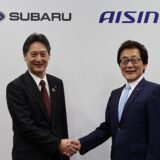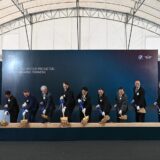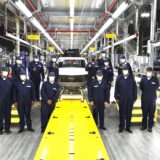General Motors outlines an all-electric path to zero emissions by 2023
American automaker General Motors announced how it is executing on a major element of its vision of a world with zero crashes, zero emissions and zero congestion, recently announced by GM Chairman and CEO Mary Barra.
“General Motors believes in an all-electric future,” said Mark Reuss, General Motors executive vice president of Product Development, Purchasing and Supply Chain. “Although that future won’t happen overnight, GM is committed to driving increased usage and acceptance of electric vehicles through no-compromise solutions that meet our customers’ needs.”
In the next 18 months, GM will introduce two new all-electric vehicles based off learnings from the Chevrolet Bolt EV. They will be the first of at least 20 new all-electric vehicles that will launch by 2023.
Given customers’ various needs, getting to a zero-emissions future will require more than just battery electric technology, GM said. “It will require a two-pronged approach to electrification — battery electric and hydrogen fuel cell electric depending on the unique requirements,” the company said in a statement.
GM also introduced SURUS — the Silent Utility Rover Universal Superstructure — a fuel cell powered, four-wheel steer concept vehicle on a heavy-duty truck frame that’s driven by two electric motors. With its capability and flexible architecture, SURUS could be used as a delivery vehicle, truck or even an ambulance — all emissions free.
General Motors Co., its subsidiaries and joint venture entities produce and sell vehicles under the Chevrolet, Cadillac, Baojun, Buick, GMC, Holden, Jiefang and Wuling brands. GM has leadership positions in several of the world’s most significant automotive markets, including China.
GM has 10 joint ventures, two wholly owned foreign enterprises and more than 58,000 employees in China. GM and its joint ventures offer the broadest lineup of vehicles and brands among automakers in China. Passenger cars and commercial vehicles are sold under the Baojun, Buick, Cadillac, Chevrolet, Jiefang and Wuling brands. In 2016, GM delivered more than 3.8 million vehicles in China.
Electrification is an important element of GM’s global strategy to reduce CO2 emissions, reduce petroleum use and help customers save money.
The Chevrolet Bolt EV introduced in the U.S. late last year achieves about 383 km of range per charge and has already logged 45 million km on the road. The Bolt EV will serve as a platform for GM’s future electric and autonomous vehicles worldwide.
Like the U.S., China is a key market for GM’s electrification solutions. Between 2016 and 2020, GM is rolling out at least 10 “new energy vehicles” (NEVs) in China. They include the Cadillac CT6 Plug-In, the Buick Velite 5 extended-range electric vehicle and the Baojun E100 electric vehicle, which have all been introduced locally within the past 12 months.
By 2025, nearly all models from GM’s global brands in China – Buick, Cadillac and Chevrolet – will offer electrification technology. To support GM’s growing NEV fleet planned for China, its SAIC-GM joint venture is opening a new battery assembly plant in Shanghai this year.













